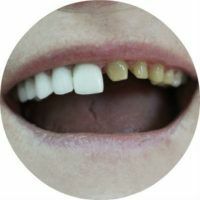
Not everyone is happy with the appearance - the color, shape, location of your own teeth. They can have different defects. These problems are solved by aesthetic dentistry using various methods of restoration of functionals. One of them is the installation of veneers on the front teeth. Such a service is widely used among patients. This is a rescue from self-doubt and help in overcoming many problems with teeth.
- Before & After
- What veneers
- Types veneers
- Porcelain
- ceramic zirconia
- Composite
- Indications for installation
- Installation
- Lifetime
- Contraindications
- Alternative veneers
- Restoration
- Crowns
- Braces
Before & After
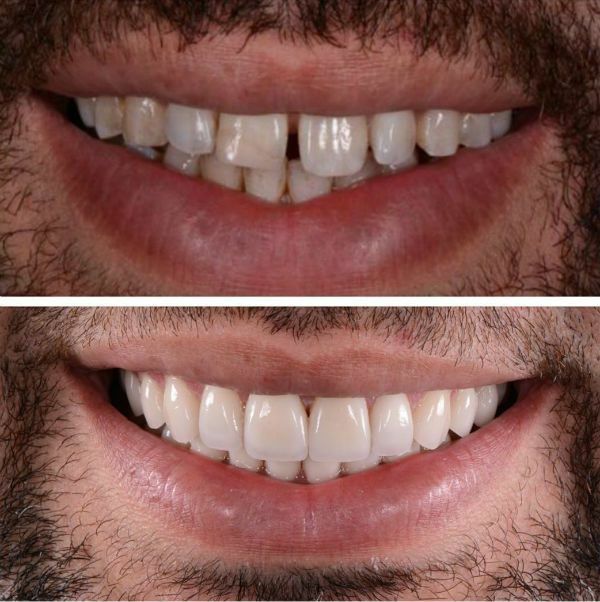
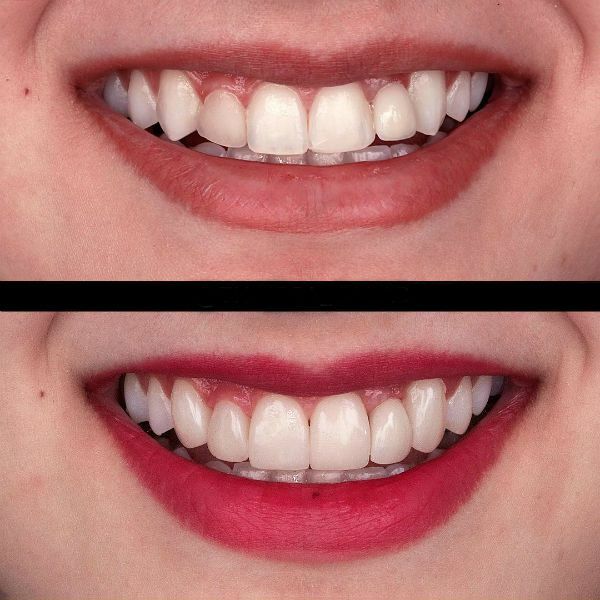
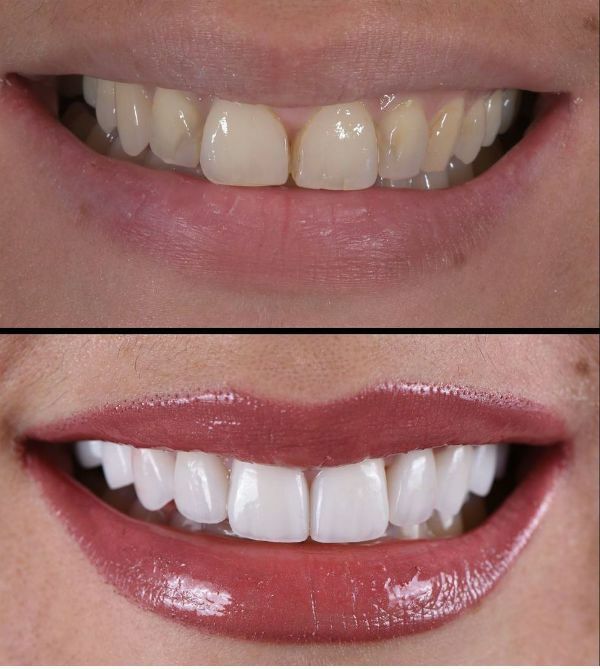
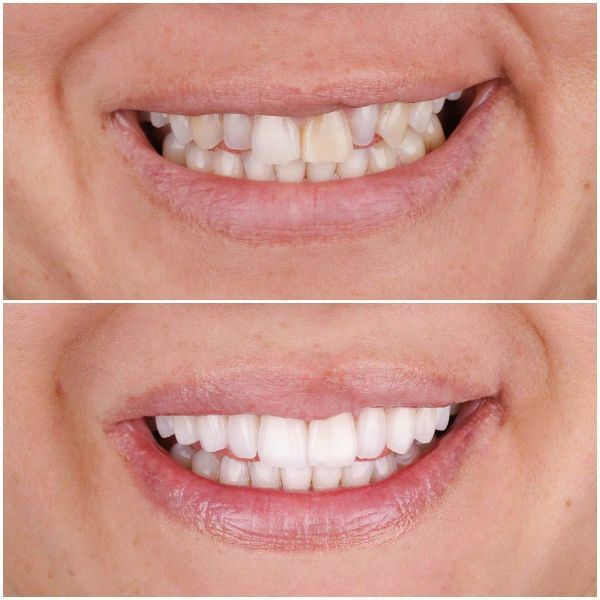
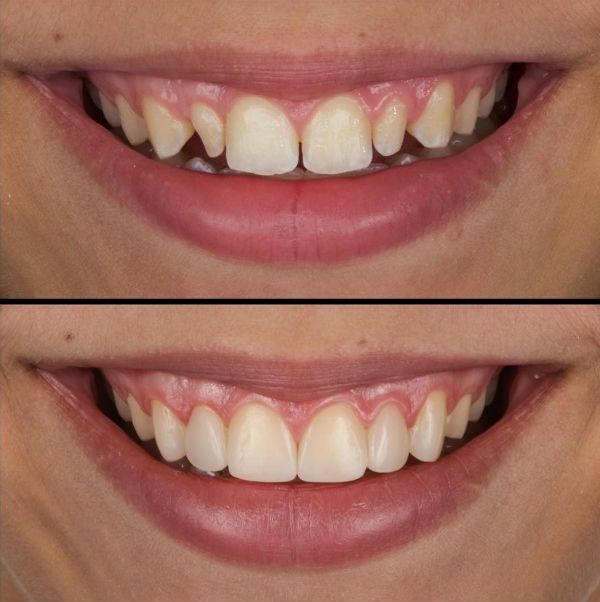
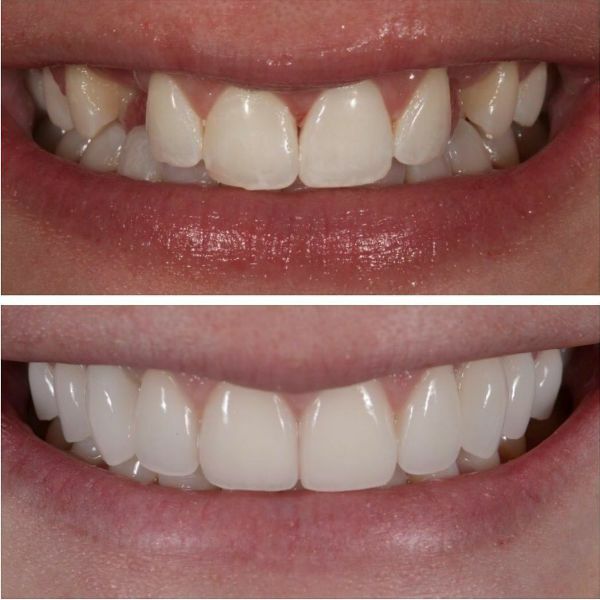
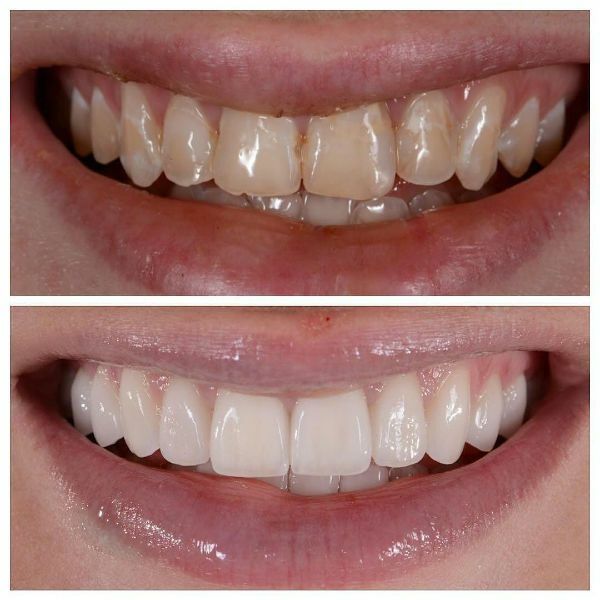

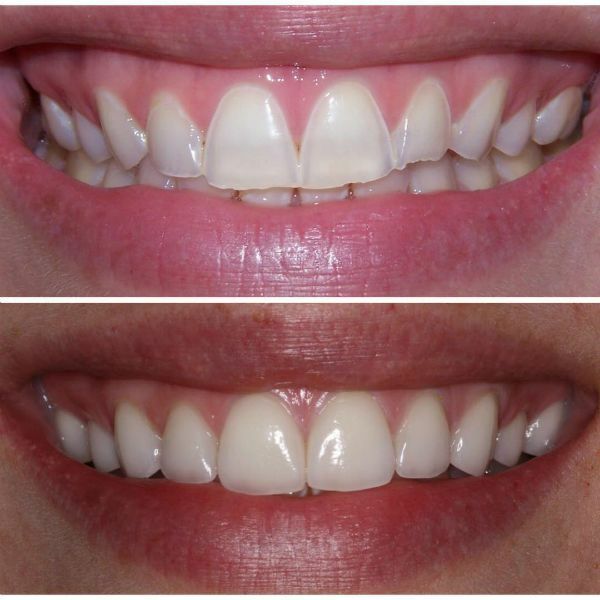
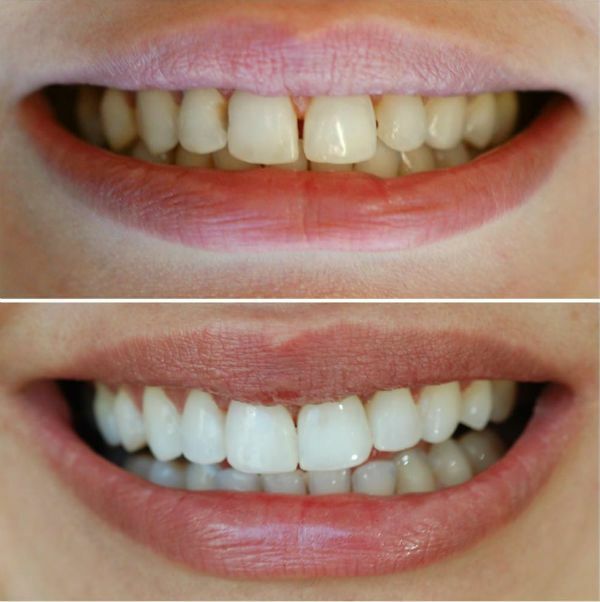
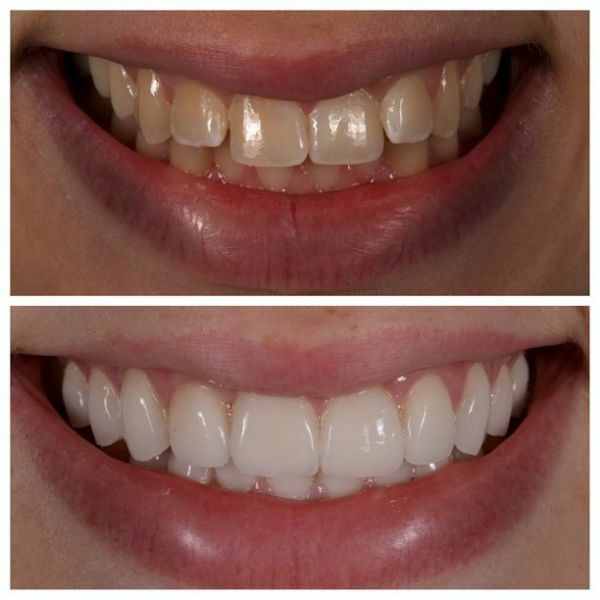
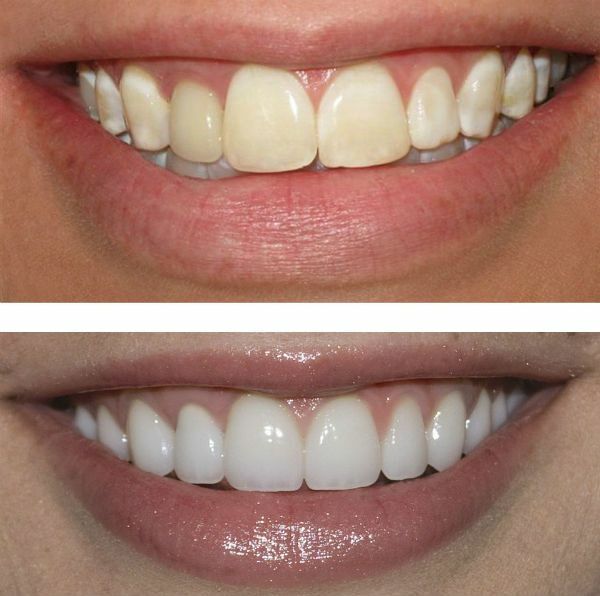
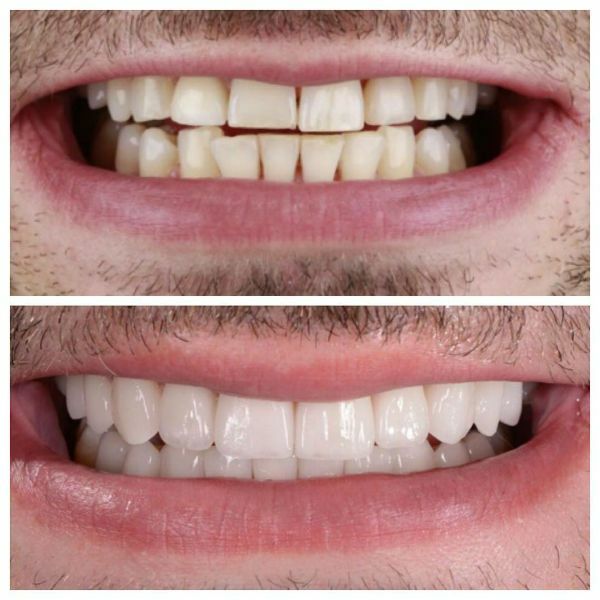
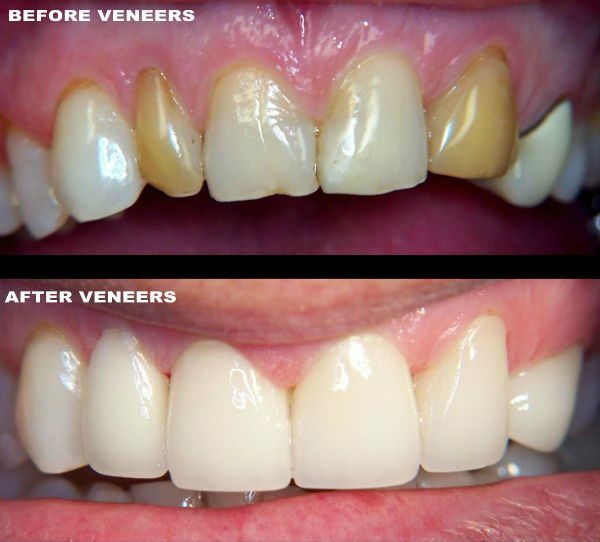
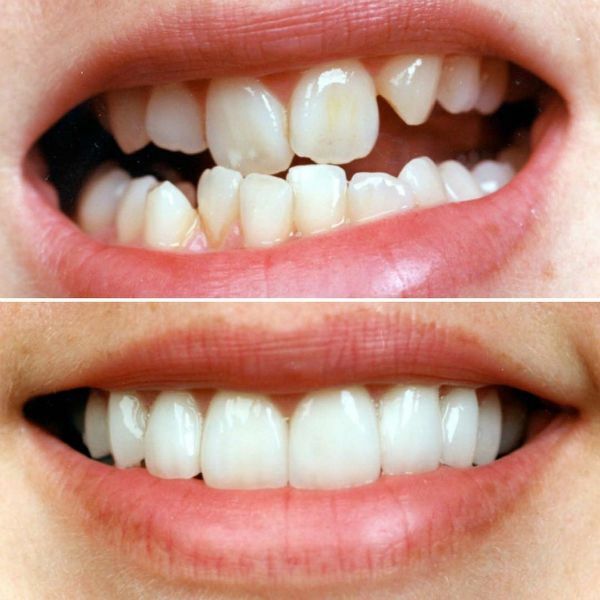
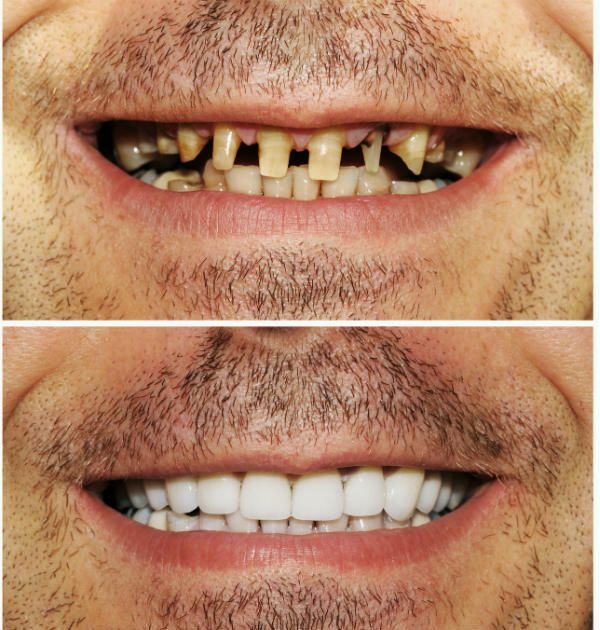
What are Veneers
These are the finest plates( their thickness is measured in fractions of a millimeter), which are placed on the front side of the front teeth and attached to a special stomaAtomic glue is a composite. These very strong plates are made in the form of teeth and are matched in color so as to look natural.
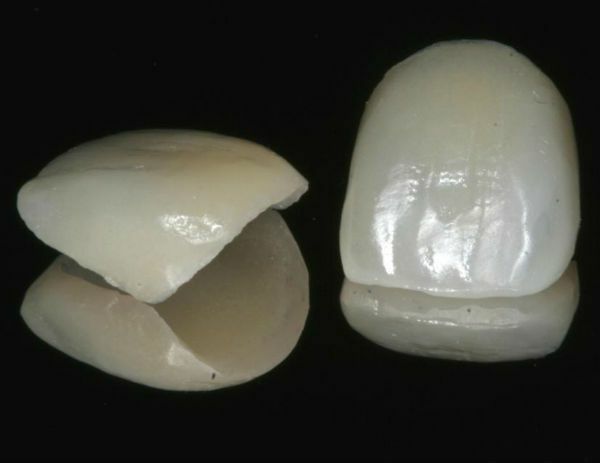
In addition to being an additional protection, their function is to improve the appearance of the teeth, to hide the defects that are present on them. In fact, these are microprosthes performing aesthetic functions. They are installed only if all serious problems with teeth have been eliminated before.
Depending on the amount of work, different types of veneers are chosen: if it is a question of one or two teeth, it can be composite prostheses, when it is necessary to close a lot more teeth, then ceramic ones are more appropriate.
to the table of contents ^Types of veneers
Depending on the materials used in the overlays, and the manufacturing technology, the veneers are divided into two types: ceramic and composite. Ceramic veneers are also manufactured in different ways and from different materials. About this in more detail.
to the table of contents ^Porcelain
Porcelain plate looks like a pocket, consisting of a larger front part and a relatively small bottom. It is made with a cast from a tooth, repeating its contours.
Porcelain facing is established by the method of indirect restoration of teeth, and strengthened with a special cement without smell and taste, holding the microprosthesis to 10 years. Indirect restoration of teeth with veneers is a process consisting of 2 stages, when the patch is first made in the laboratory, and then installed on a pre-prepared tooth for it.
These are durable veneers of long service life, their colors, selected according to the table, are as close as possible to the natural color of teeth. They do not stain, they do not scratch.
But apart from the pluses, these veneers also have disadvantages. Porcelain - a fragile material, it can be broken with a large load on the chewing surface( for example, if you gnaw nuts).This plate is not repaired, it is changed. Given the cost of the material, it is quite expensive.
In addition, when installing these veneers for their aesthetic appearance and better fit, the top layer of tooth enamel is topped off. Because of this, all subsequent patches should only be of this type. And this is an expensive pleasure.
to the table of contents ^Ceramic zirconium dioxide
The serious difference between these linings from other veneers on the front teeth is that they are two-layered: ceramics is applied to the zirconium skeleton. Zirconium veneers are slightly more voluminous than others and less transparent.
Modern computer technologies and ultra-precise equipment are involved in their manufacture. This allows you to create an exact copy of the tooth in all parameters. They are very durable, and the flawless color does not change with time and under the influence of coloring substances contained in food, drinks, cigarettes.
The disadvantages of these designs are their high price and long production time. To install them, you also need to grind a small layer of enamel, so in the future, you can not change this type of overlapping to others. These veneers are recommended not only to improve the appearance, but also to correct the position of the teeth.
Recently, new varieties of ceramic linings - Hollywood veneers or lumineers. They are not thicker than contact lenses, but they are made of especially durable porcelain.
Their main advantage is that they are veneers without enamel turning. The tooth surface before their installation is only slightly processed, so that the lining firmly seated on it. This procedure does not cause pain, does not require anesthesia, and the result of strength and durability exceeds all other options, but it also costs more.
Composite
Composite veneers are produced from a composite material used for tooth filling. The newest composites have almost the same properties as ceramics. Sometimes they are even combined with it. Restoration with the help of a composite is very flexible, so, with its help, if necessary, you can change only part of the tooth.
Two types of composite veneers are used: direct and indirect. In the first case, they are modeled directly in the dental chair. They are not very durable and not as durable as ceramic ones. Work on their installation takes( depending on the volume) on the strength of an hour and a half. The tooth is not needed to grind the tooth.
Indirect installation is based on the principle of ceramic linings. The material is the same as in the first case, but it is exposed to temperature and pressure in the laboratory. Therefore, it lasts longer than with a direct installation.
The term of these veneers is from 3 to 5 years, but during this time they can lose their shine and change the color.
Indications for the installation of
Veneers are installed for restoration and correction of the teeth in such cases:
- There are chipped,cracks due to demineralization, trauma in the caries process on the front teeth.
- It does not suit the color of teeth, which can not be changed with normal care, it contrasts with the shade of the seal.
- Enamel is quickly erased and destroyed, it becomes too sensitive.
- Teeth have an irregular or uncomfortable shape, position.
- There are noticeable gaps between the teeth.
Installation of
Indirect installation of ceramic veneers is carried out in stages:
- To ensure that the cover fits snugly against the tooth, remove a thin layer of enamel( about 0.5 mm).
- A special spoon into the human oral cavity is injected with a gel-like mass that forms an impression of the surface of the teeth. The frozen substrate is taken out and given to the dental laboratory, in which the specialist creates a plaster model that follows the shape of the teeth.
- With the help of the color chart, the doctor selects the shade, which is most suitable for the color of the patient's teeth.
- Since the process of manufacturing the prosthesis takes some time, during the first visit the dentist places temporary veneers over the removed enamel, gluing them. It is necessary to protect the teeth from further destruction and to avoid painful sensations during chewing after pre-treatment of the functionals.
- At the repeated visit to the doctor, the patient is given a permanent prosthesis. It is adjusted for tight fit, check bite, correct location. Then the veneer is cemented, it and the tooth surface are treated with a disinfecting solution and put with a special adhesive paste. Grind, removing the remains of cement.
Direct installation is much easier and faster than indirect, with:
- First select the shade of the material.
- Then the tooth surface is treated, disinfected, a composite is applied to it in several layers.
- It forms in the form of a tooth, and then is ground.
Service life
The durability of the veneer covers depends on the type of materials and the technologies used in their installation.
Composite overlays serve an average of up to 5 years, but with each year the quality of materials increases, the service life of such microprostheses increases.
In many cases, the patients themselves are guilty of damage to the lining, violating the elementary rules of caring for them. Extend their service in such ways:
- Special attention is required for areas where the artificial and own tooth surfaces are joined. They should be treated with dental irrigators.
- Do not clean teeth with abrasive pastes.
- Avoid shock and dental injuries.
- Do not bite hard objects or food.
- And those who have uncontrolled nocturnal gnashing should be protected with special drops.
Contraindications
The installation of veneers is contraindicated in such cases:
- If the tooth enamel is quickly erased or very thin.
- With caries and periodontal disease, which were not treated.
- If the patient has a bruxism.
- If the teeth were treated with resorcin-formalin.
- Too few chewing functionals or they are subject to destruction.
- Incorrect bite of teeth.
- Some categories of athletes who are engaged in power or extreme sports( hockey players, boxers and the like).They have too great a risk of damage to their teeth, which can injure other organs.
- If the front teeth have internal injuries.
Lumineers have almost no contraindications. They can not be put only on weakened teeth, with a too thin layer of enamel and with a significant pathology of bite.
to table of contents ^Alternative to veneers
There are various options for correcting tooth defects. Their choice depends on the nature of the changes and the urgency of their correction.
to contents ^Restoration
The polymer materials used for direct restoration are cheaper than the materials used for veneers. They do not have the same light-conducting characteristics, they are not transparent.
Often, such materials differ in color from tooth enamel, and eventually darken, especially at the boundaries of contact with it. In addition, they are more susceptible to coloring agents than ceramics.
to contents ^Crowns
The purpose of crowns is to eliminate extensive damage to the dental substance. The technology of their installation provides for a significant change in the configuration of teeth, their grinding. Veneers exclude such cardinal changes, only the surface layer of enamel is removed.
If there are no contraindications to dental patches, it is better to choose them. Otherwise, the installation of crowns can not be avoided.
to table of contents ^Brackets
Veneers create only a visual effect of correcting an incorrect layout or form of functionals. Only with minor curvatures, they bring visible benefits. For serious bite defects and tooth configuration, braces are used.
A full-fledged effect is achieved only with a long and constant use. But they do not damage the teeth at all, and besides, there are different types of braces that do not strike the eye and almost do not spoil the smile.
